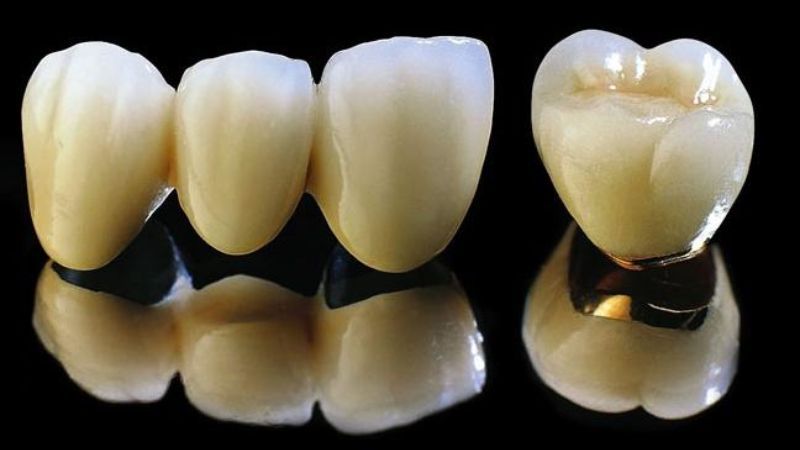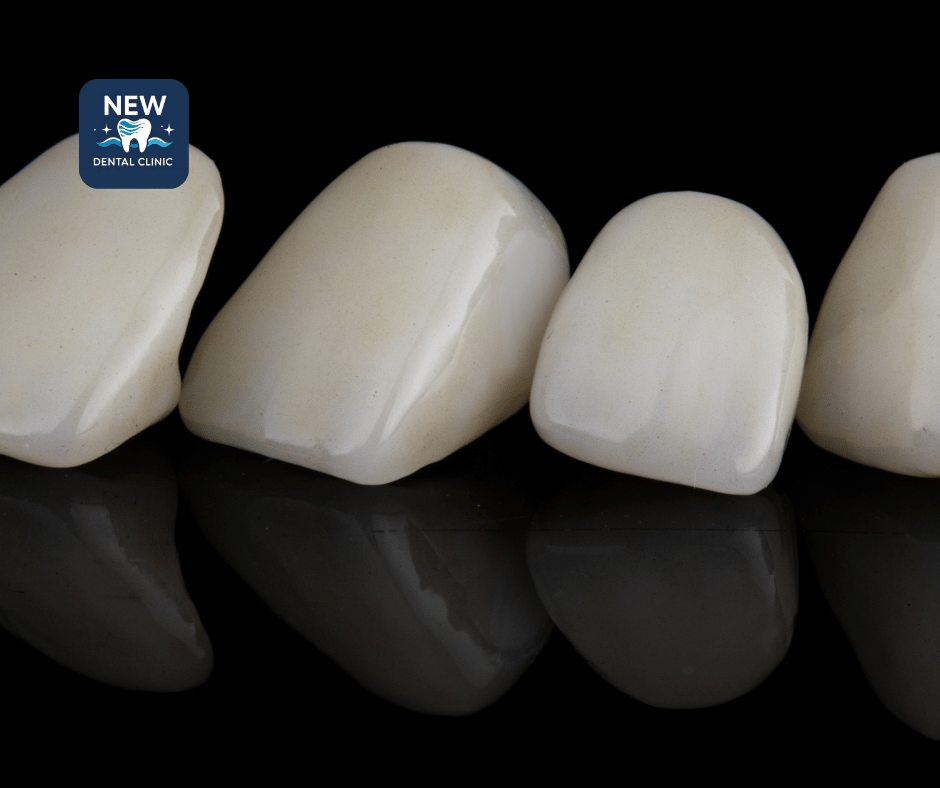Welcome back.
In our previous discussion, we thoroughly explored the foundational question: “What are Porcelain Crowns? Pros and Cons“. Now that you have a solid understanding of the procedure’s nature, its benefits, and the factors to consider, we can step into a deeper, more exciting, and equally crucial stage of your journey: selecting the material—the very heart and soul of a dental crown.
When exploring the popular types of dental crowns today, you might feel like you’re navigating a maze of names like Zirconia, E.max, Cercon, Lava Plus, all with significantly different price points. Why do some crowns cost a few hundred dollars while others cost several thousand? Which material is truly the most durable? And which one can deliver a beauty so natural it’s indistinguishable from a real tooth?
Don’t worry. Consider this article your detailed map. With my experience, I will help you categorize, compare, and understand the true nature of each material. My goal is to empower you to confidently choose a “new smile” that is not only beautiful and durable but also perfectly suited to your specific needs and budget as you continue your porcelain crown journey.
Foundational Knowledge: The Two Main Categories of Crowns You Need to Distinguish
Before diving into specific brand names, it’s essential to differentiate between the two primary categories of materials that have been and are currently used in dentistry. All of the popular types of dental crowns today fall into one of these two groups.
Porcelain-Fused-to-Metal (PFM) Crowns: The “Traditional” Line

This is the older generation of dental crowns, composed of two layers:
- Inner Core: A metal alloy substructure (typically Nickel-Chromium, Cobalt-Chromium, Titanium, or even precious metals). This core provides the primary strength.
- Outer Layer: Multiple layers of porcelain are baked on top of the metal core to create a tooth-like color and shape.
Advantages:
- High Durability: Thanks to the supporting metal framework, PFM crowns have good resistance to chewing forces.
- Cost-Effective: This is their biggest advantage, making them a budget-friendly option for many.
Critical Disadvantages:
- The Black Gum Line: Over time, the metal core can oxidize in the mouth’s acidic environment, causing a grayish shadow or a distinct black line to appear at the gumline, which is a major aesthetic concern.
- Unnatural Aesthetics: The opaque metal core prevents light from passing through the crown as it would with a natural tooth, often resulting in a flat, chalky-white appearance that lacks the depth and translucency of real enamel.
- Risk of Allergic Reactions: Some individuals with sensitive systems may experience allergic reactions or gum irritation from the Nickel in the alloy.
Expert Advice: In 2025, with the advancement of new materials, PFM crowns are no longer the preferred choice for aesthetic restorations, especially for front teeth.
All-Ceramic Crowns: The Revolution in Modern Dentistry

As the name suggests, all-ceramic crowns are crafted from 100% solid ceramic, containing no metal whatsoever. The advent of this line of crowns has overcome all the disadvantages of their PFM predecessors.
Superior Advantages:
- Perfect Aesthetics: They possess a color, translucency, and optical properties (like the subtle translucency at the incisal edge) that are virtually identical to natural tooth enamel.
- Absolute Biocompatibility: Ceramic is a completely inert material, 100% compatible with the body’s tissues. It causes no irritation and does not oxidize.
- No More Black Gum Lines: Guarantees long-lasting beauty over time.
- Good Insulation: Protects the underlying natural tooth from sensitivity to hot and cold foods.
Disadvantage:
- Higher Cost: Due to the advanced materials and complex fabrication technology required.
Expert Advice: All-ceramic crowns are the gold standard for all aesthetic dental restorations today. When researching the popular types of dental crowns today, your focus should be on the different types of all-ceramic materials available.
A Detailed Exploration of the Popular Types of Dental Crowns Today (All-Ceramic Line)
Now, let’s delve into the world of all-ceramic crowns, where each name represents unique properties and technology.
Zirconia Crowns: The Undefeated Champion of Strength and Durability

When it comes to the most durable dental crowns, Zirconia is always the first name mentioned.
- What is it? Zirconia (Zirconium Dioxide) is a white, powdered metal oxide. It is also known as “white steel” or “ceramic steel” in dentistry due to its exceptional hardness and fracture resistance.
- Key Advantages:
- Superb Strength: The compressive strength of Zirconia can reach 1200 – 1400 MPa, which is 5-7 times stronger than natural tooth enamel. This makes it the ideal material for areas that endure heavy chewing forces.
- Fracture-Resistant: Extremely durable, making it suitable for long-span dental bridges that replace multiple missing teeth.
- Good Aesthetics: While not as translucent as other ceramics, newer generations of Zirconia (like multilayered Zirconia) have significantly improved in color and translucency, offering a natural appearance.
- Minor Disadvantage: Its extreme hardness can sometimes cause minor wear on the opposing natural teeth if the bite is not perfectly adjusted by the dentist. Older generations of Zirconia could appear slightly opaque.
- Best suited for:
- Molars and premolars (the main chewing teeth).
- Dental bridges for missing teeth.
- Restorations on dental implants.
- Popular brand names: Cercon HT (Dentsply Sirona), Lava Plus (3M ESPE), Nacera (Doceram), Katana (Kuraray Noritake).
E.max Crowns (Lithium Disilicate): The Master of Aesthetics and Natural Beauty

If Zirconia is a warrior, then E.max is an artist. This material is considered the pinnacle of aesthetics in dentistry.
- What is it? E.max is a type of glass-ceramic, with its main component being Lithium Disilicate. This glass crystal structure allows light to pass through it in a very natural way.
- Key Advantages:
- Supreme Aesthetics: The translucency, opacity, and fluorescent properties of E.max crowns almost perfectly replicate natural tooth enamel. It is incredibly difficult to distinguish an E.max crown from a real tooth.
- Minimal Invasion: Because it can be fabricated in very thin layers while still maintaining good strength, E.max is the ideal material for porcelain veneers, which require very little tooth reduction.
- Excellent Bonding: It has the ability to form a very strong chemical bond with the natural tooth structure.
- Disadvantage:
- Lower Strength than Zirconia: The strength of E.max is around 400 – 500 MPa. While still stronger than a natural tooth, it is not suitable for long dental bridges in the molar region.
- Best suited for:
- Porcelain Veneers.
- Crowns for front teeth and canines (teeth that require the highest level of aesthetics).
- Inlays, Onlays, and Overlays (aesthetic ceramic fillings).
- Popular brand name: IPS E.max (Ivoclar Vivadent).
An Overview Comparison of the Popular Types of Dental Crowns Today
For your easy reference, here is a visual comparison of the main types of crowns:
| Criteria | Porcelain-Fused-to-Metal (PFM) | Zirconia Crown | E.max Crown |
| Aesthetics | Average (Opaque, lacks translucency) | Good to Very Good | Excellent (Natural-looking) |
| Strength (MPa) | Good (~800 MPa) | Excellent (1200+ MPa) | Good (~500 MPa) |
| Black Gum Line | High risk | No | No |
| Biocompatibility | Average (Risk of Nickel allergy) | Very High | Very High |
| Tooth Reduction | Relatively high | Relatively high (for crowns) | Minimal (for Veneers) |
| Recommended Position | Molars (budget option) | Molars, Bridges, Implants | Front teeth, Veneers |
| Cost | Lowest | High | Highest |
Expert Advice: Choosing the Right Crown for Each Tooth Position
One common mistake is applying one type of ceramic for all teeth. A wise choice involves using “the right material for the right position” to optimize aesthetics, function, and cost.
For the Anterior Teeth (The Ultimate Aesthetic Zone)
- First Choice: E.max. This is the “king” of the anterior region. The incisal translucency and optical effects of E.max will give you the most natural, delicate, and vibrant smile. Especially for veneers, E.max allows for maximum preservation of your natural tooth.
- Alternative Choice: High-Translucency Multilayered Zirconia. Newer generations of Zirconia like Katana or Nacera have vastly improved translucency, making them a good option if you need both high aesthetics and added strength for your front teeth.
For the Posterior Teeth (The Main Functional Chewing Zone)
- First Choice: Zirconia. It is the undisputed champion for resisting chewing forces. The durability of Zirconia ensures you can eat comfortably for many years without worrying about fractures. Its appearance is also more than sufficient for teeth located in the back of the mouth.
- Budget-Friendly Option: PFM Crowns with Titanium Alloy. If budget is a major concern, a PFM crown with a titanium substructure can be a viable option for molars. However, you must accept its long-term disadvantages.
For Dental Bridges (Spanning a Gap from a Missing Tooth)
- Almost Exclusive Indication: Zirconia. A dental bridge requires a material with superior flexural strength and fracture resistance to safely span the gap of the missing tooth. Only Zirconia possesses the strength to handle this task safely and sustainably.
At this point, I trust you not only have a clear understanding of the popular types of dental crowns today, but you can also begin to identify the most suitable material for your own needs and desires. Knowledge of materials is a solid foundation. However, a high-end E.max crown in the hands of an inexperienced dentist cannot compare to a Zirconia crown crafted through a meticulous, standard-compliant process. So, what does a safe, precise, and aesthetically optimal dental crown procedure actually look like? From the first consultation to the moment you see your new smile in the mirror, every step requires absolute precision and care. To help you feel completely at ease and well-prepared, I invite you to explore the details with me in our next article: The A-to-Z Guide to the Dental Crown Procedure.


